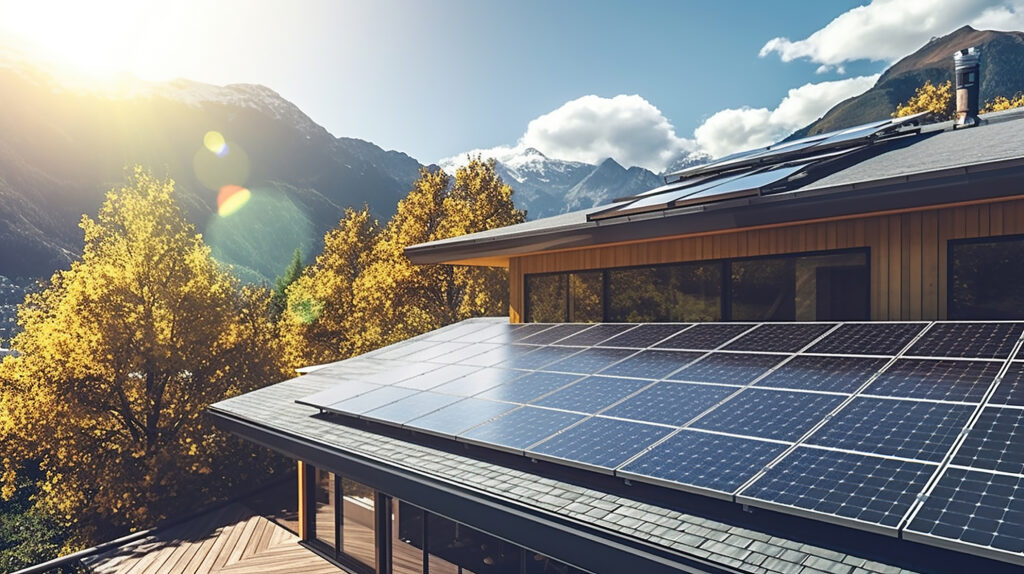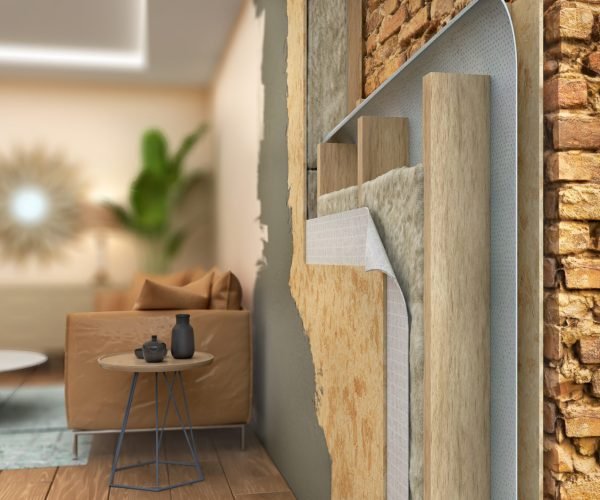sustainability
Most designers and homeowners understand the basic concepts of energy efficiency, but few people have all the right information at their fingertips. The energy efficiency of your home’s design can have a huge impact on your monthly utility bill, and also on the environment. There are different specialists who work together in collaboration and there needs to be overall synergy in the design approach to energy efficiency. Architects and engineers need to closely collaborate to achieve optimized building envelopes to meet mechanical, electrical, and thermal objectives for performance, durability, and passive energy calculations.

What are the main elements affecting thermal performance?
- Insulation: Insulation is the primary factor that determines the thermal performance of a building envelope. It works by reducing heat transfer through conduction, convection, and radiation.
- Windows: Windows can be a major source of heat loss in a building. Choosing windows with low U-values (a measure of heat transfer) and high solar heat gain coefficients (a measure of the ability to absorb solar radiation) can help improve the thermal performance of a building envelope.
- Air sealing: Proper air sealing of the building envelope can help reduce drafts and prevent heat loss. This can be achieved through the use of weatherstripping, caulk, and other materials.
- Roofing: The type and color of roofing material can affect the thermal performance of a building envelope. Dark-colored roofing materials absorb more solar radiation, which can increase the temperature of the building. Light-colored roofing materials reflect more solar radiation, which can help keep the building cooler.
- Wall construction: The type of wall construction can also affect the thermal performance of a building envelope. Solid walls with high thermal mass, such as concrete or brick, can help regulate the temperature inside a building by absorbing and releasing heat slowly.

Understanding the building layers
The basic principle involves three layers that protect the interior of structures:
- 1.The weather layer (exterior layer)
- 2.The insulation layer
- 3.The airtight layer (interior layer)
What are the main elements affecting thermal performance?
The Weather Layer
The weather layer of a building is the outermost layer of the building envelope, and its primary function is to protect the building and its occupants from the elements. The weather layer is typically composed of materials such as siding, cladding, or roofing that are designed to withstand wind, rain, snow, and other environmental conditions. The weather layer also plays a critical role in the thermal performance of a building. It can help to reduce heat loss and gain by providing a barrier between the interior of the building and the outside environment. In addition, the type and color of the material used for the weather layer can affect the amount of solar radiation that is absorbed or reflected by the building, which can in turn impact the building’s temperature. Overall, the weather layer is an important component of the building envelope that helps to protect the building and its occupants and contribute to the building’s energy efficiency.
The Insulation Layer
Insulation is a material that is used to reduce heat transfer by conduction, convection, and radiation. It is typically installed in the walls, floors, and ceilings of a building to help keep the interior spaces warm in the winter and cool in the summer. These insulating layers can be used individually or in combination to provide the desired level of insulation for a building. The type of insulation chosen will depend on the specific needs and characteristics of the building, as well as the local climate and other factors.
There are several types of insulation materials that can be used in buildings, including:
- Fiberglass: Fiberglass insulation is made from glass fibers that are spun into a mat. It is commonly used in walls, attics, and crawl spaces.
- Cellulose: Cellulose insulation is made from recycled newspaper and other materials that are treated with chemicals to make them fire resistant. It is typically used in attics and walls.
- Polystyrene: Polystyrene insulation is made from small beads of expanded polystyrene (EPS) or extruded polystyrene (XPS). It is commonly used in walls, floors, and roofs.
- Rock wool: Rock wool insulation is made from molten rock that is spun into fibers and then molded into various shapes. It is commonly used in walls, attics, and crawl spaces.
One of the keys to understanding how insulation works is the concept of “thermal bridge.”
A thermal bridge, also known as a “cold bridge,” is a path through which heat can more easily flow from the inside of a building to the outside or vice versa. Thermal bridges are typically found at points where different building materials or elements meet, such as at the junctions between walls and roofs, windows and walls, or floors and walls. Thermal bridges can significantly reduce the overall thermal performance of a building envelope, and they are a major cause of heat loss and energy inefficiency in buildings. To reduce the impact of thermal bridges, it is important to use materials and construction methods that minimize their formation and conductivity. This can include using insulation at the junction between different building materials and designing the building to minimize the number of thermal bridges.
The airtight layer
The airtight layer of a building is a continuous layer of material that is designed to prevent air infiltration and exfiltration through the building envelope. It is typically located after the insulation layer and is designed to seal gaps, cracks, and other openings that can allow air to flow in or out of the building. The airtight layer is an important component of a building’s thermal envelope, as it helps to reduce drafts and maintain a consistent indoor temperature. It can be achieved through the use of materials such as weatherstripping, caulk, and spray foam insulation, which are applied to seal gaps and cracks around windows, doors, and other openings in the building envelope.
In addition to improving the thermal performance of a building, an airtight layer can also help to improve indoor air quality by reducing the infiltration of outdoor pollutants and allergens.
-
Shipping Container Homes
40ft Double Container Home Plans – Spacious One Bedroom Studio with Walk-In Closet
$150.00Original price was: $150.00.$100.00Current price is: $100.00.Rated 0 out of 5Add to cart -
Products
Pre-Engineered “Tokyo Shipping Container Home Plans – 3x40ft Modern Design Inspired by Japanese Living
$135.00Original price was: $135.00.$99.99Current price is: $99.99.Rated 0 out of 5Add to cart -
Shipping Container Homes
DIY Concrete Block Foundation Plan for 20ft Shipping Container Storage
$19.99Original price was: $19.99.$9.99Current price is: $9.99.Rated 0 out of 5Add to cart




